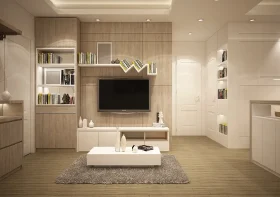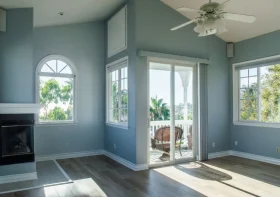7 Roofing Trends Gaining Popularity Among Modern Homeowners

Homeowners today are rethinking what a roof can do, not just in terms of basic protection, but in efficiency, aesthetics, and innovation. Roofing is no longer just the practical cap on a structure; it’s becoming a statement of sustainability, style, and smart living. As building technologies evolve and environmental concerns rise, roofing choices are shifting dramatically.
Modern roofing trends reflect a desire for materials and designs that support energy conservation, long-term durability, and visual appeal. These trends are not fleeting fashion statements; they are rooted in meaningful improvements that enhance both home value and daily living. Here are seven roofing trends that are gaining traction among contemporary homeowners, and why they’re worth paying attention to.
Contents
- 1 Sustainable Materials Lead the Way
- 2 Solar Integration Without Sacrificing Style
- 3 Metal Roofing Gains Widespread Acceptance
- 4 Lighter, More Reflective Colors for Energy Savings
- 5 Architectural Shingles for Dimension and Depth
- 6 Roof Designs That Support Smart Home Technology
- 7 Emphasis on Low Maintenance and Long-Term Value
Sustainable Materials Lead the Way
Sustainability is no longer a buzzword; it’s a key driver of home improvement decisions. As climate awareness increases, more homeowners are selecting roofing materials that reduce environmental impact, lower energy bills, and last longer than conventional options.
Options like recycled shingles, cool roofs, and natural materials such as clay and slate are becoming more mainstream. These choices reduce waste and minimize the need for frequent replacements. Green roofs, which involve planting vegetation over waterproof membranes, are gaining appeal in urban environments.
They offer natural insulation, reduce runoff, and improve air quality. Consulting with roofing experts early in the design process can help homeowners find the right sustainable materials for their climate and structure. These professionals understand which products meet modern standards for durability, insulation, and aesthetics, helping homeowners make informed choices that last.
Solar Integration Without Sacrificing Style
Solar energy has been around for decades, but recent advancements have made it far more appealing in the roofing world. Traditional panels, once bulky and visually intrusive, have evolved into sleek solar shingles and integrated solar tiles that blend seamlessly into rooflines.
These newer technologies allow homeowners to capture solar energy without altering the look of their homes. Tesla’s Solar Roof and similar products from other manufacturers offer high-performance energy generation while mimicking the appearance of conventional shingles or tiles.
Incentives such as tax credits and utility rebates make solar integration more accessible than ever. With concerns over rising energy costs, many homeowners see solar roofing as an investment that offers both aesthetic and financial returns.
Metal Roofing Gains Widespread Acceptance
Once reserved for barns and industrial buildings, metal roofing is quickly becoming a favorite for residential properties. Its appeal lies in a combination of longevity, energy efficiency, and style versatility.
Today’s metal roofs come in a wide variety of colors, finishes, and textures, including options that mimic wood shake or traditional shingles. They’re fire-resistant, lightweight, and capable of withstanding extreme weather conditions. This makes them an ideal choice in areas prone to high winds, heavy snow, or wildfires.
Metal roofs reflect solar heat, helping reduce cooling costs in warmer climates. While the initial investment may be higher than that of asphalt shingles, the long-term savings and durability often make up for the difference.
Lighter, More Reflective Colors for Energy Savings
Roof color has a bigger impact on home energy use than many people realize. Dark-colored roofs absorb more heat, driving up indoor temperatures and forcing HVAC systems to work harder. In response, homeowners are turning to lighter-colored roofing materials designed to reflect sunlight and maintain cooler interiors.
This trend is particularly strong in southern and western states, where the sun’s intensity can push summer cooling costs sky-high. Reflective roofing surfaces cut utility bills and extend the life of the roof by reducing heat-related wear and tear.
Manufacturers now offer an array of cool-toned options, from pale grays and soft browns to modern whites and even pastel hues, that combine performance with curb appeal. These choices provide practical benefits without compromising the look of the home.
Architectural Shingles for Dimension and Depth
Architectural or dimensional shingles are a premium alternative to traditional asphalt shingles. These thicker, more textured materials provide a high-end look that mimics slate, cedar, or other natural finishes at a fraction of the cost.
What sets architectural shingles apart is their ability to add visual interest and depth to a roof. They’re popular in new home construction or full roof replacements where appearance matters as much as function.
Besides aesthetics, these shingles offer better wind resistance, longer warranties, and increased durability compared to basic 3-tab shingles. Homeowners seeking both style and strength find them to be a smart upgrade.
Roof Designs That Support Smart Home Technology
As smart home devices continue to evolve, roofing systems are keeping pace. Homeowners are now considering how their roofs can support sensors, Wi-Fi antennas, security cameras, and other connected devices.
Some modern roofing materials include built-in pathways for wiring or offer surfaces that enhance connectivity. Smart vents and attic fans, for example, automatically adjust based on temperature and humidity to improve ventilation and reduce energy use.
In high-end homes, integrated monitoring systems track roof performance in real-time, detecting leaks, moisture buildup, or structural shifts before they become major issues. This level of intelligence ensures that homeowners stay ahead of maintenance problems and extend the life of their investment.
Emphasis on Low Maintenance and Long-Term Value
More than ever, homeowners want roofing systems that perform well with minimal upkeep. Long gone are the days when frequent patchwork and sealing were acceptable. Today’s consumers seek materials that retain their appearance and integrity over decades, not years.
Concrete tiles, synthetic slate, composite shingles, and high-grade metal options all deliver low-maintenance reliability. Many of these products are engineered to resist algae growth, fading, cracking, and impact damage.
Durability plays a role in resale value. A home with a roof that requires little maintenance and still has decades of life left is more attractive to potential buyers. That’s why many homeowners now view roofing as a strategic investment rather than a short-term fix.
The modern homeowner wants a roof that does more than just keep the rain out. From integrating solar power to reducing maintenance demands and improving energy efficiency, today’s roofing trends reflect a broader push toward smarter, more sustainable living.
Whether you’re building from the ground up or replacing an aging system, these trends offer options that combine form, function, and forward-thinking innovation. By staying current with advancements in materials and design, you not only enhance your home’s value, but also create a safer, more comfortable place to live for years to come.



